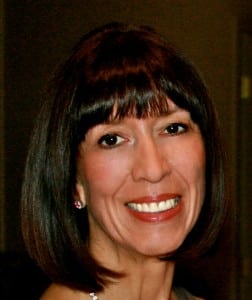
Surveys have been a mainstay in public relations because they are tried and true, and most important, when done right they are newsworthy. A well-thought-out survey can help reveal new information, expose the latest fads and provide fodder for a winning news story.
In addition to publicity, at Pollock Communications we often use surveys to help better understand our clients’ business needs, as well as keep our finger on the pulse of industry and consumer trends.
Most recently, we commissioned our second annual survey of the nation’s registered dietitians to help uncover the Top Diet Trends for 2013.
These invaluable insights made headlines in media outlets across the nation, and helped form the basis for a variety of marketing initiatives for the agency and for our clients.
We’ve used relevant statistics and data across all social media channels, we’ve incorporated nuggets into presentations, and we are sharing the information day-to-day in meetings, at events and at trade shows with a variety of audiences.
What’s the recipe for a successful survey? It’s an assortment of ingredients that mix together to yield the optimal results. Here are some tips for how communications pros can make the most out of surveys:
1. Choose a newsworthy topic. A hot news topic right now might be old news by the time you craft your questions, field the survey, and analyze and disseminate the results. So be particularly careful in choosing the topic of the survey. First and foremost, it needs to be able to effectively communicate your key message, but it must also be newsworthy or it will never gain legs.
Beyond that, it should appeal to a variety of your target audiences, if you really want to stretch its life and viability.
Try to think ahead to what an upcoming trend might be, or create your own news by uncovering a trend or new data that will underscore your key message with your target audiences.
2. Ask the right questions. Consider what you want the outcome to be, so that you can ask the right questions. Aside from the obvious newsworthiness of the data, how else will you maximize the results? What other audiences do you want to reach, and what questions will help you provide a fresh perspective, reveal new statistics and uncover valuable data?
Factor in questions that will help you effectively achieve all of these objectives. And sometimes it is useful to ask the same question in several different ways to ensure you are capturing your desired response.
The same question asked in different formats—open-ended; choose one answer; choose multiple answers or rank the answers—can yield very different results.
3. Select the right spokesperson. A spokesperson will help you amplify your message to your target audiences. Choose one who resonates with media, your consumer demographic and other key stakeholders, such as sales representatives, clients, retailers and industry professionals. Identifying a spokesperson who has credibility across your desired channels of outreach will help you drive your message and extend the reach of your survey results.
4. Use the data. Once you’ve nailed down the topic, questions and spokesperson, it’s imperative that you utilize the data in all of your initiatives.
Of course, a press release and media dissemination is key, but think beyond the usual outlets to spread the news throughout all marketing and communications channels.
Take each key survey finding and develop a series of blog posts further expanding on each discovery to provide fodder for your Web site. Share a new daily, weekly or monthly statistic on Facebook, LinkedIn and Twitter. Create a video with your spokesperson summarizing the results for YouTube and find images that relate to the results to pin on Pinterest or upload to Instagram.
Offer your spokesperson to provide commentary on the results at meetings with key stakeholders (e.g., sales representatives, retailers, trade shows and industry professionals).
Translate the data in a compelling way to reach target audiences and maximize your results. PRN
CONTACT:
Louise Pollock is president of Pollock Communications, a New York City-based PR agency specializing in food and nutrition communications. She can be reached at [email protected].
